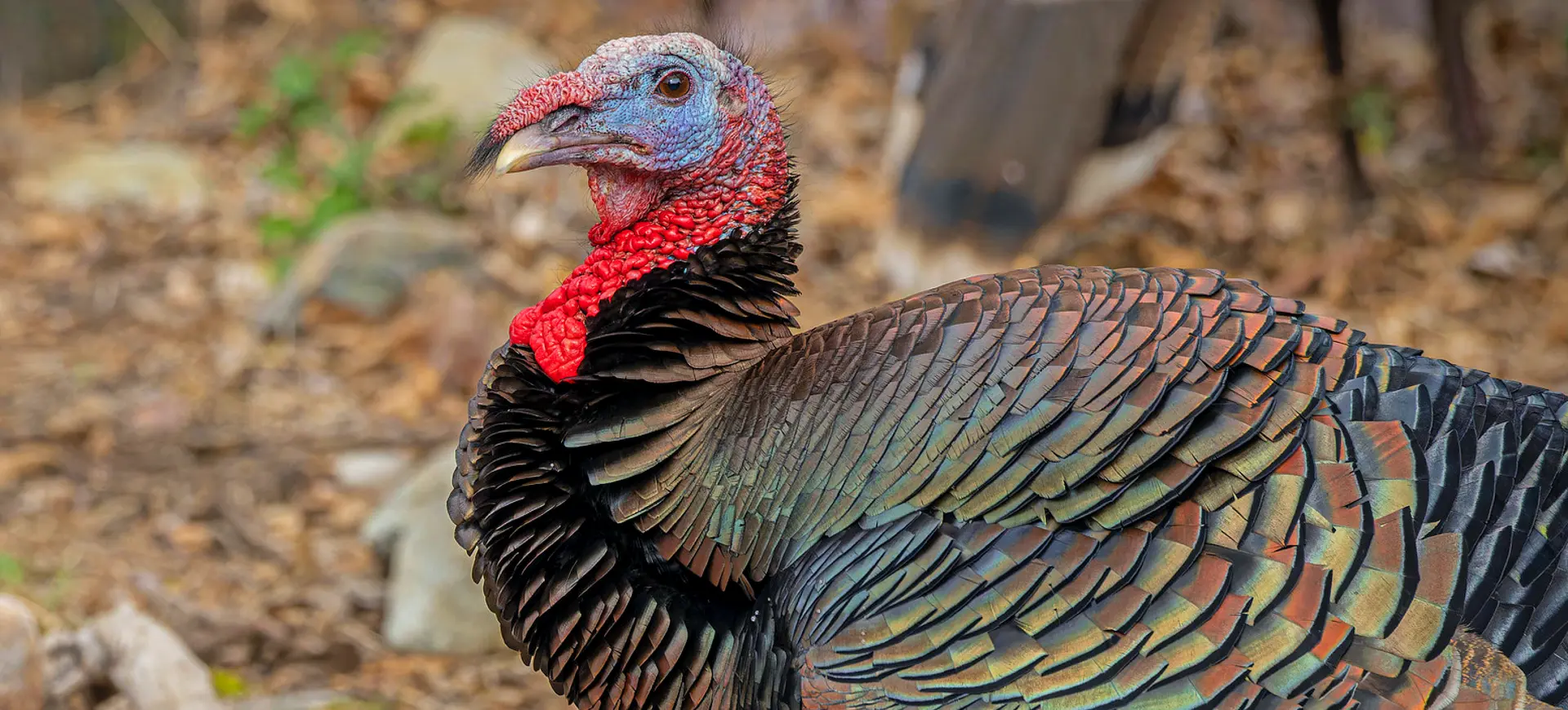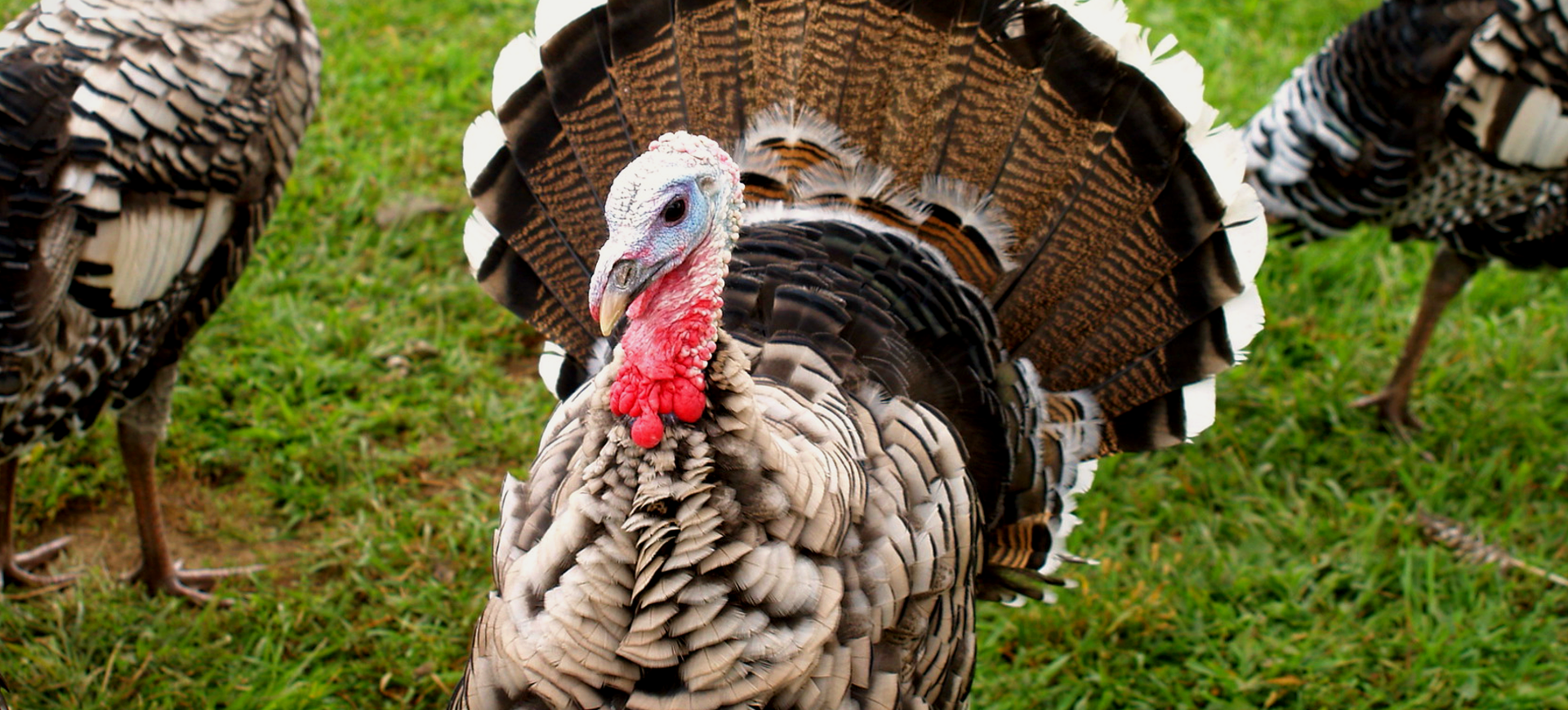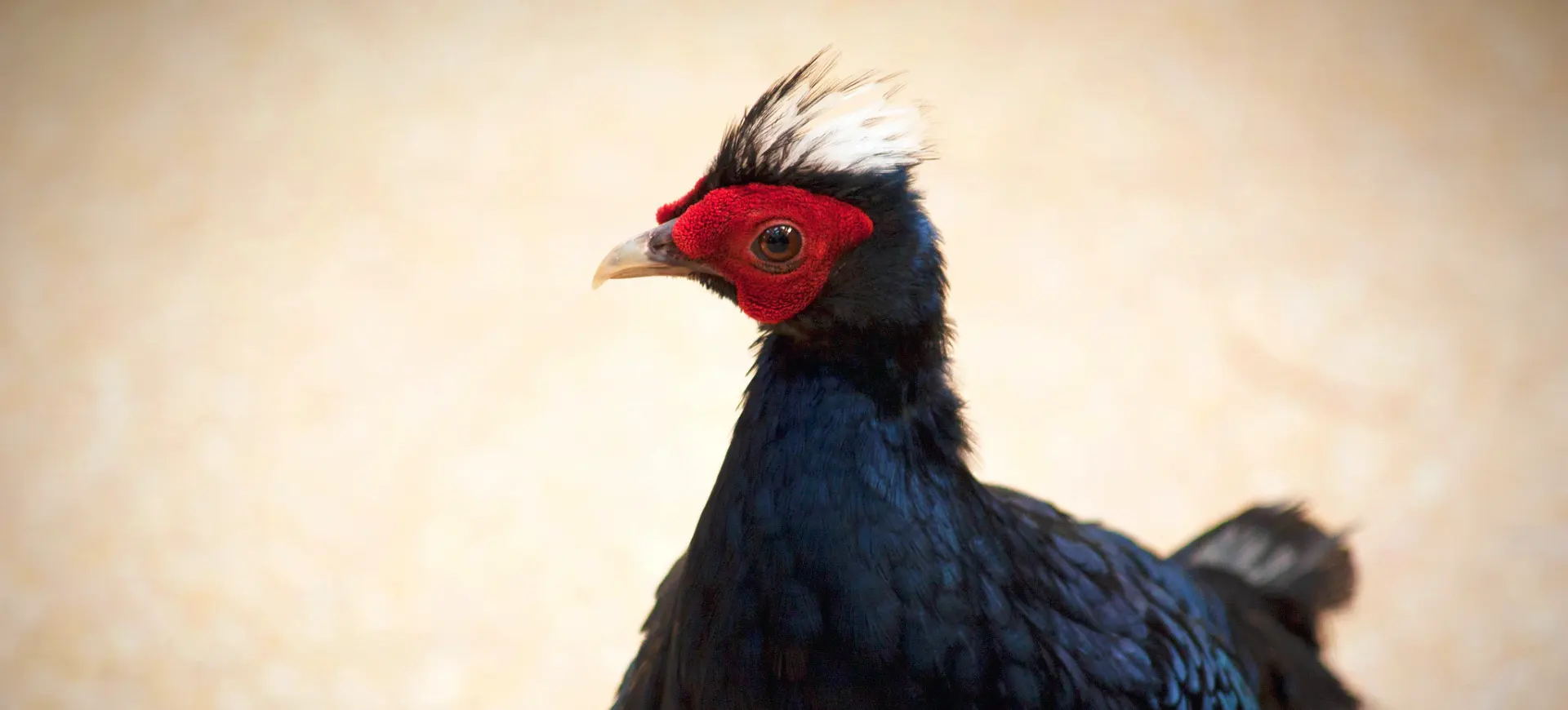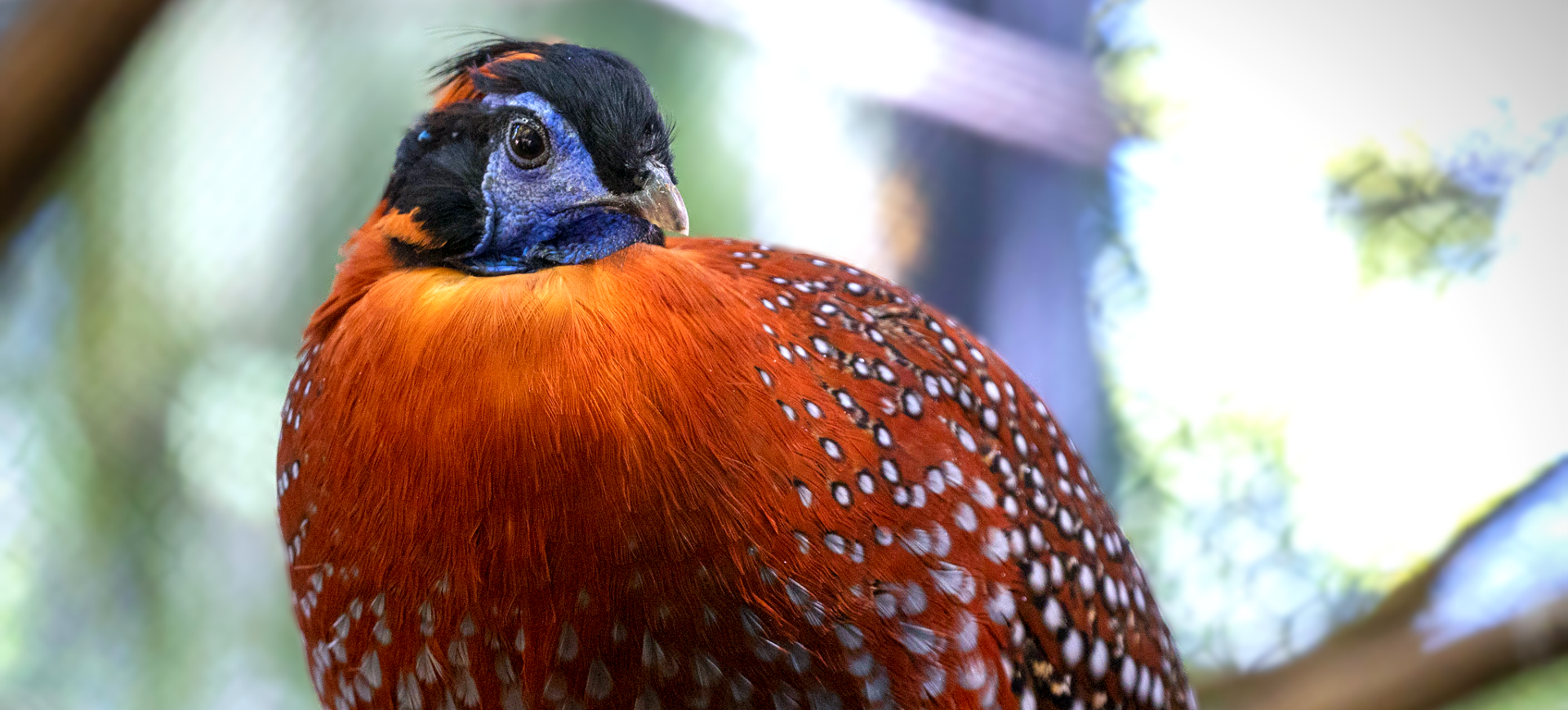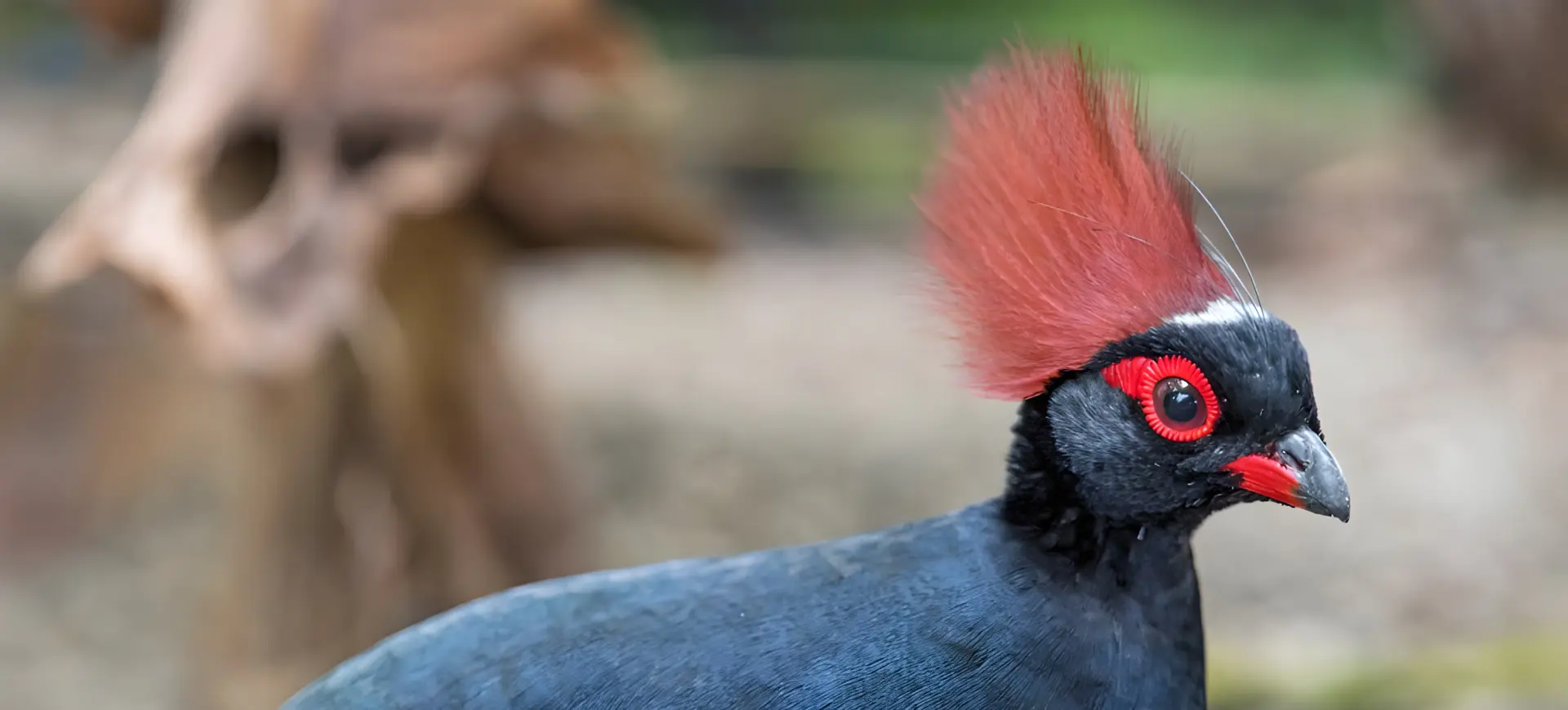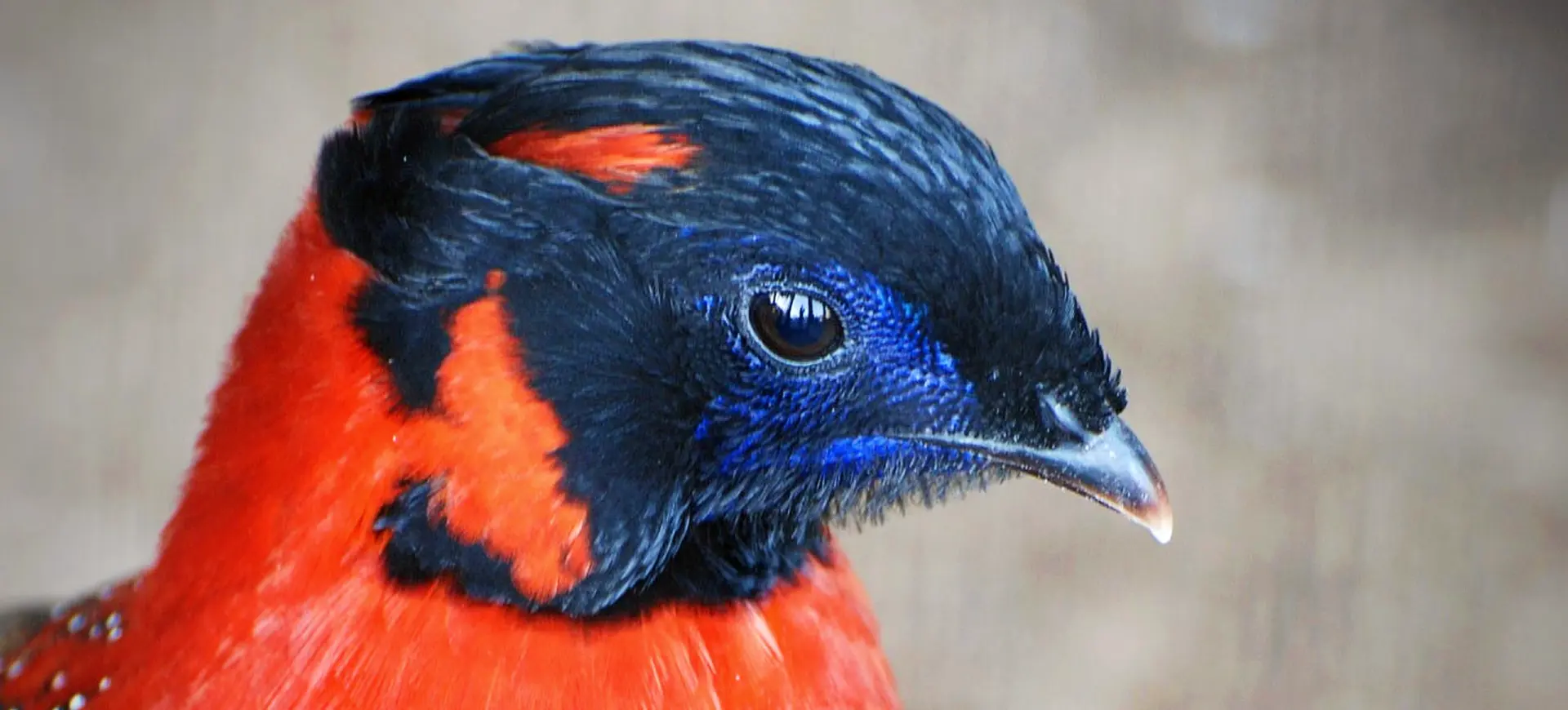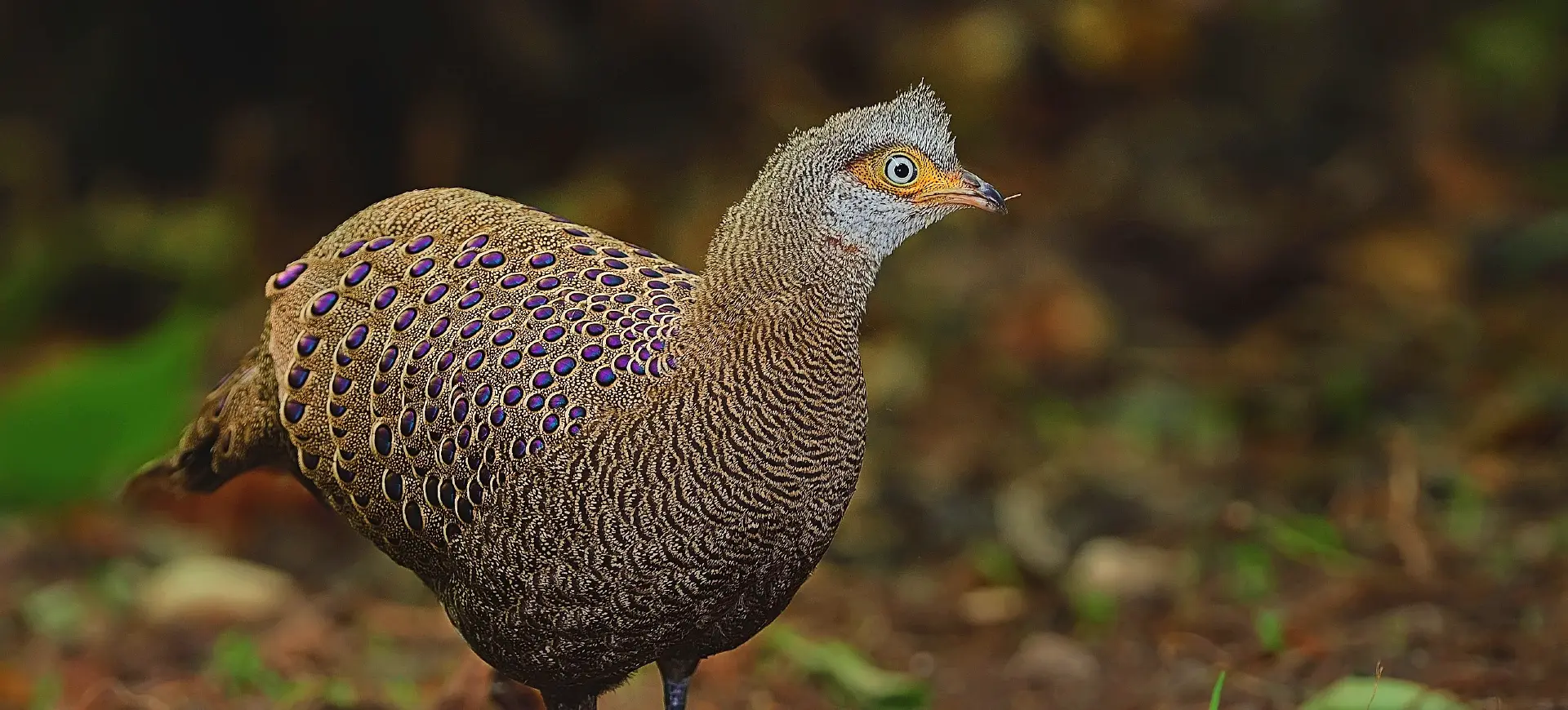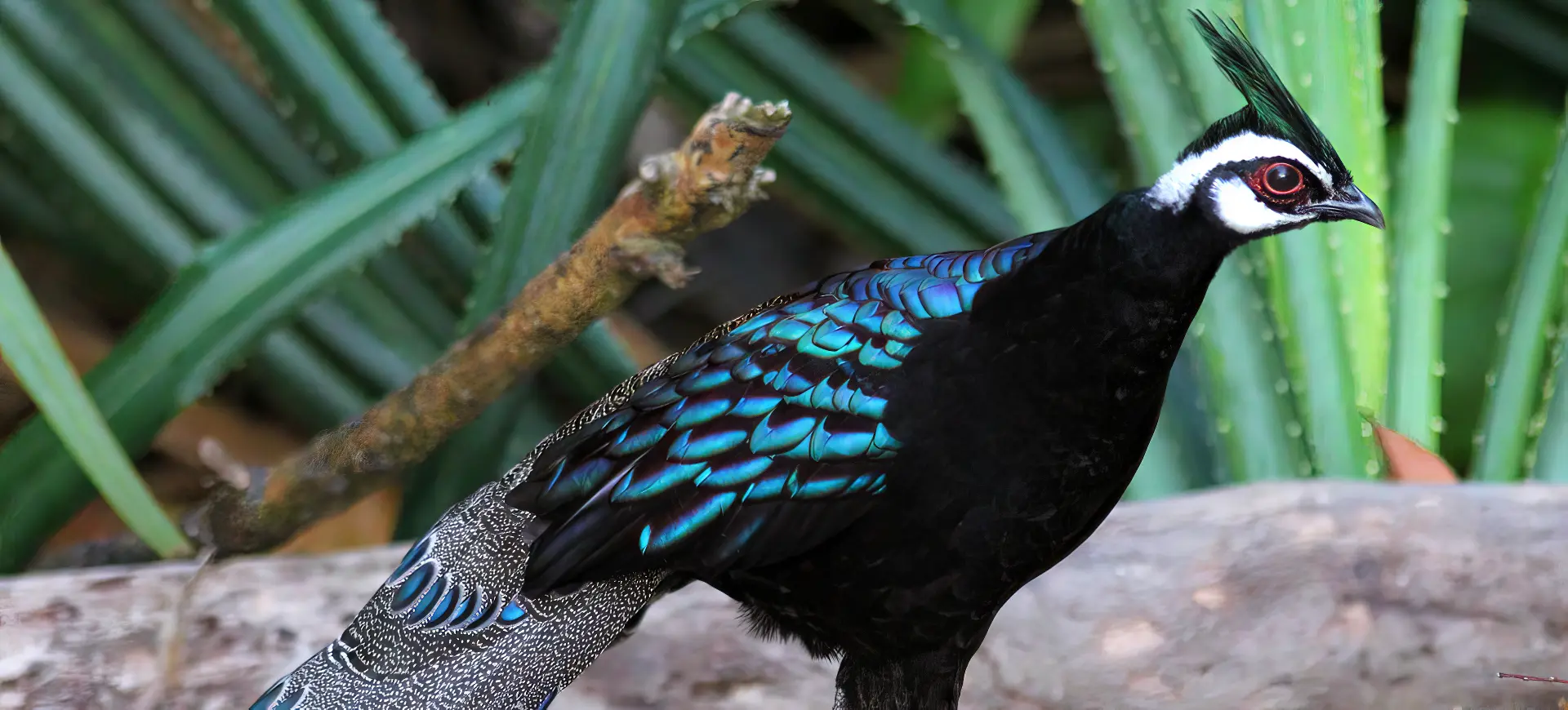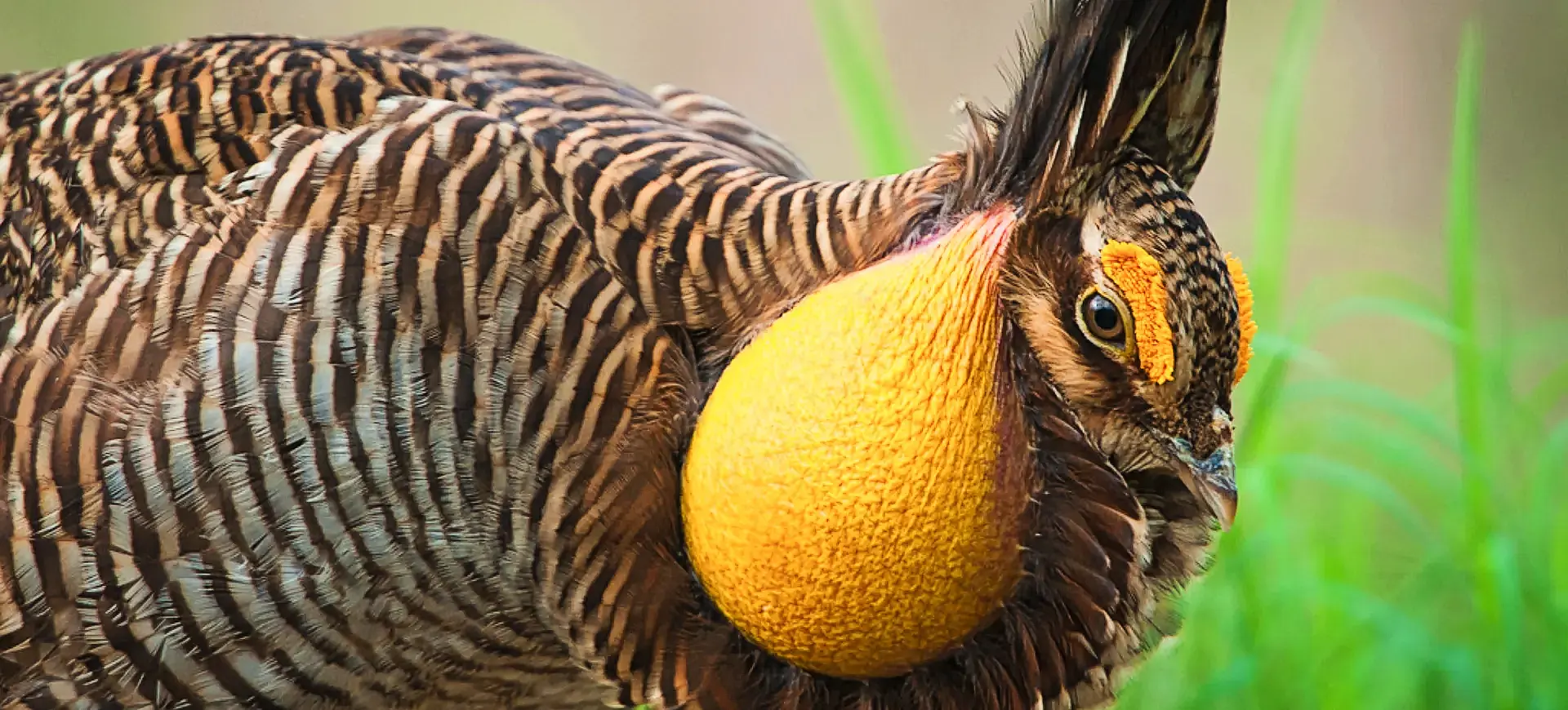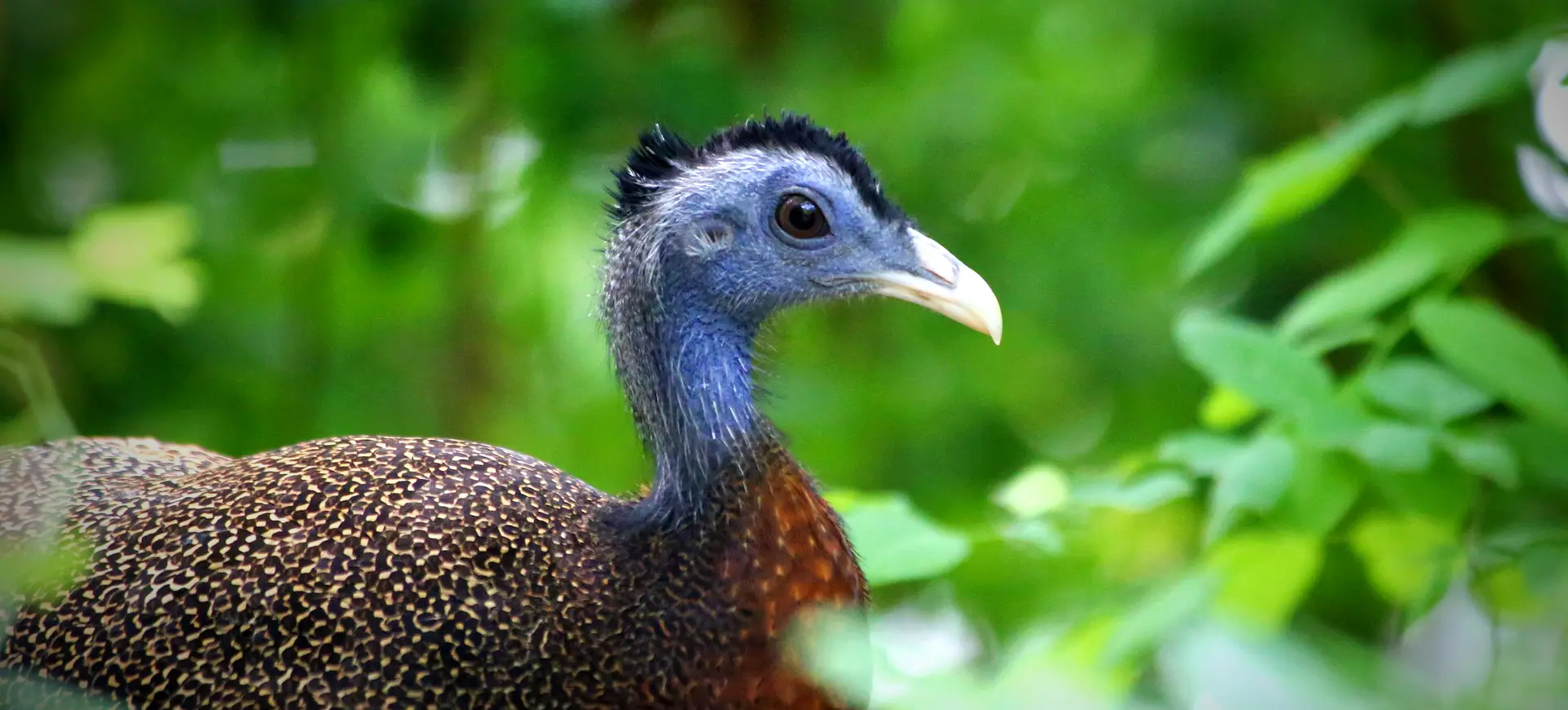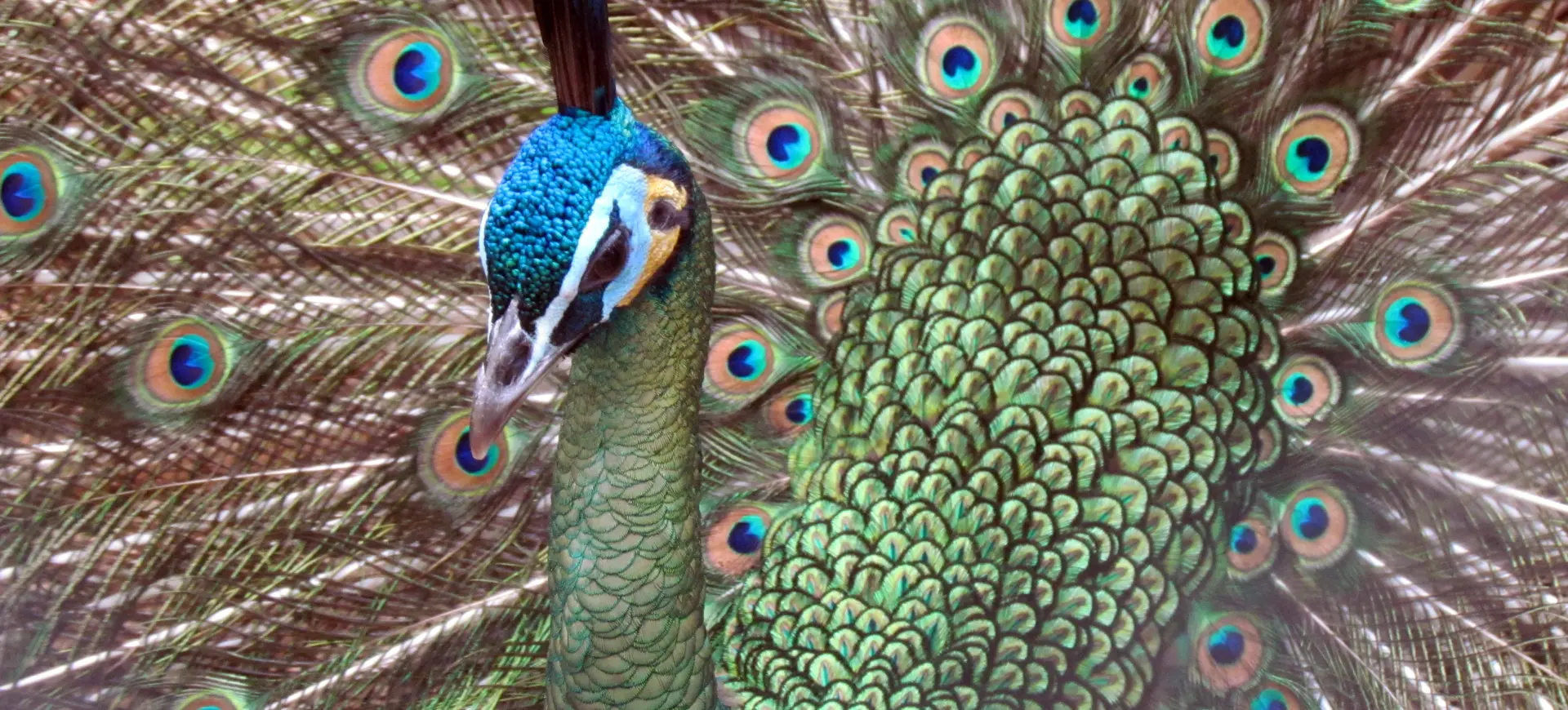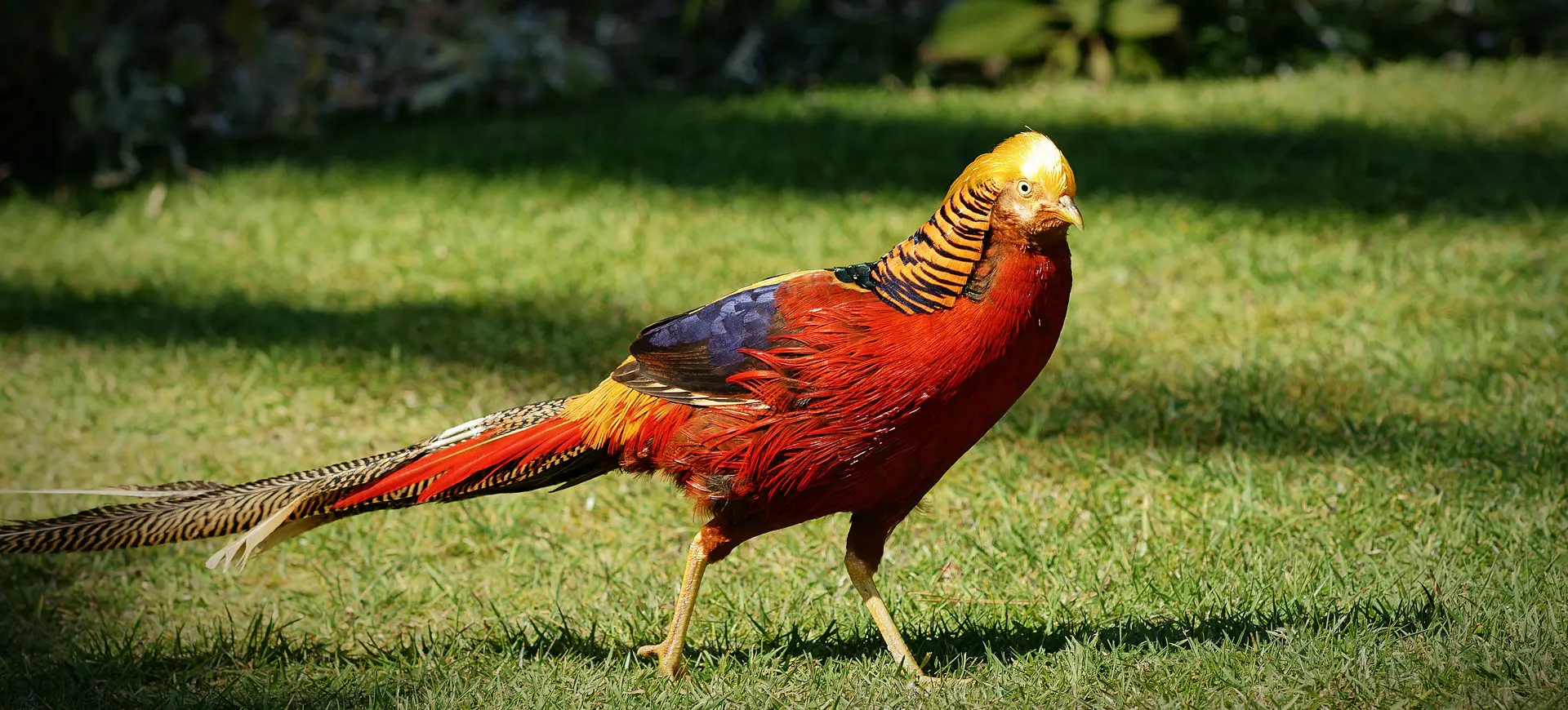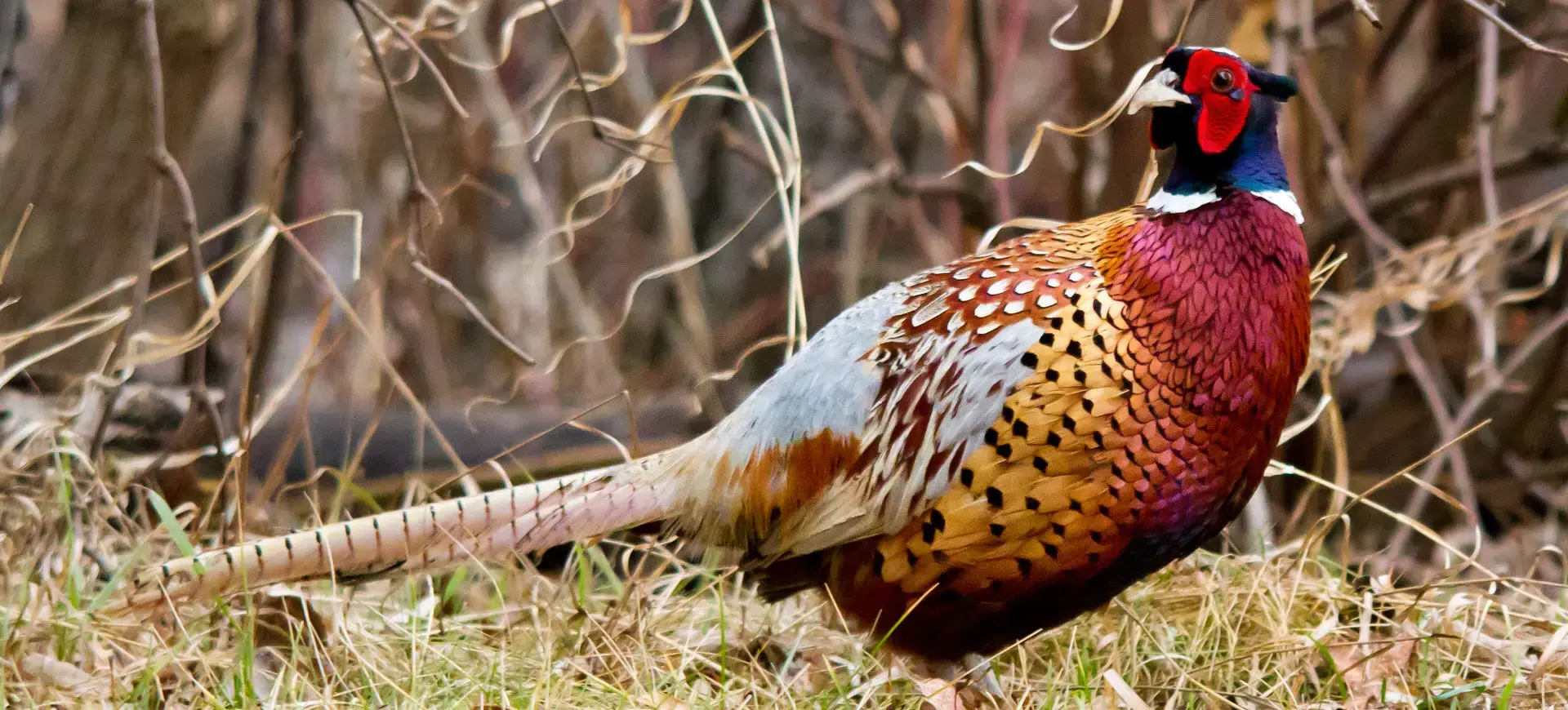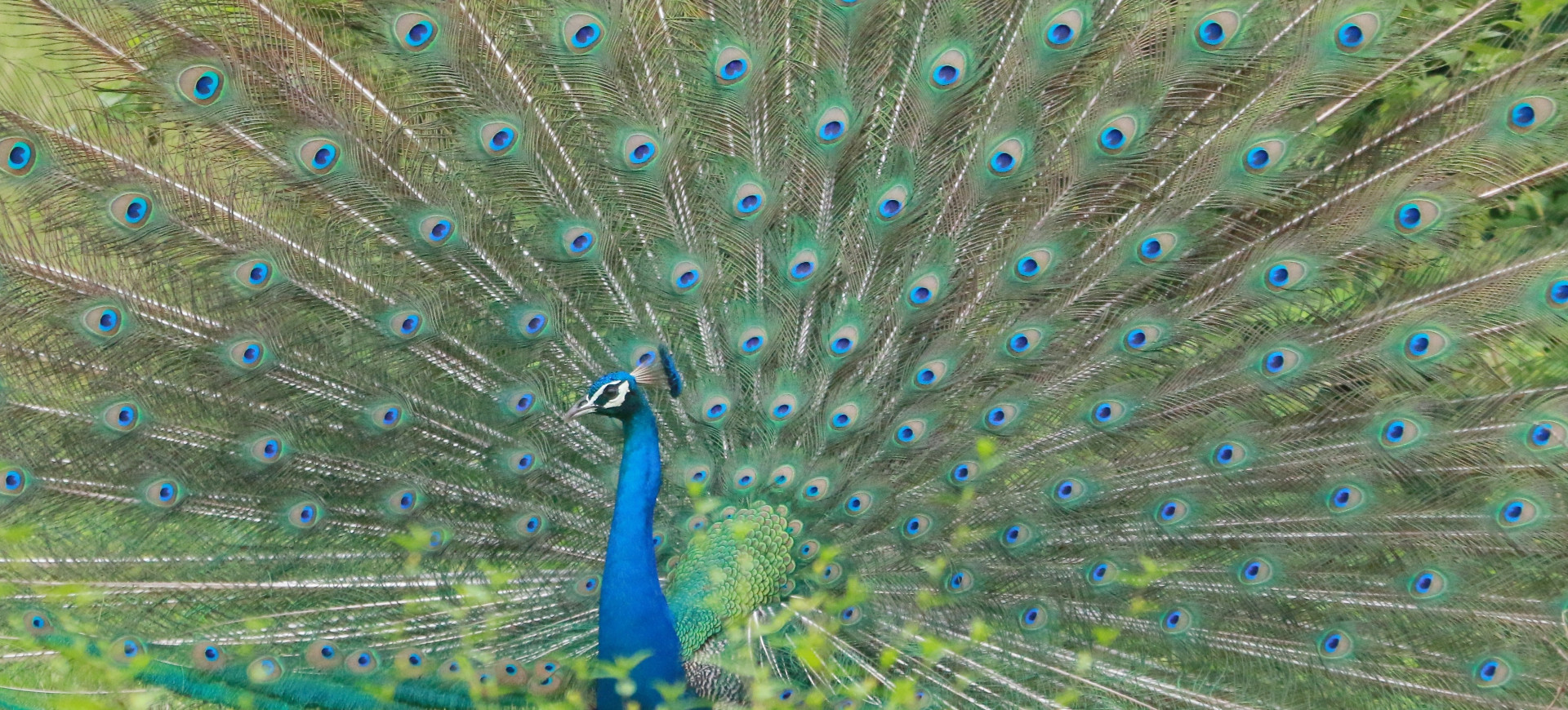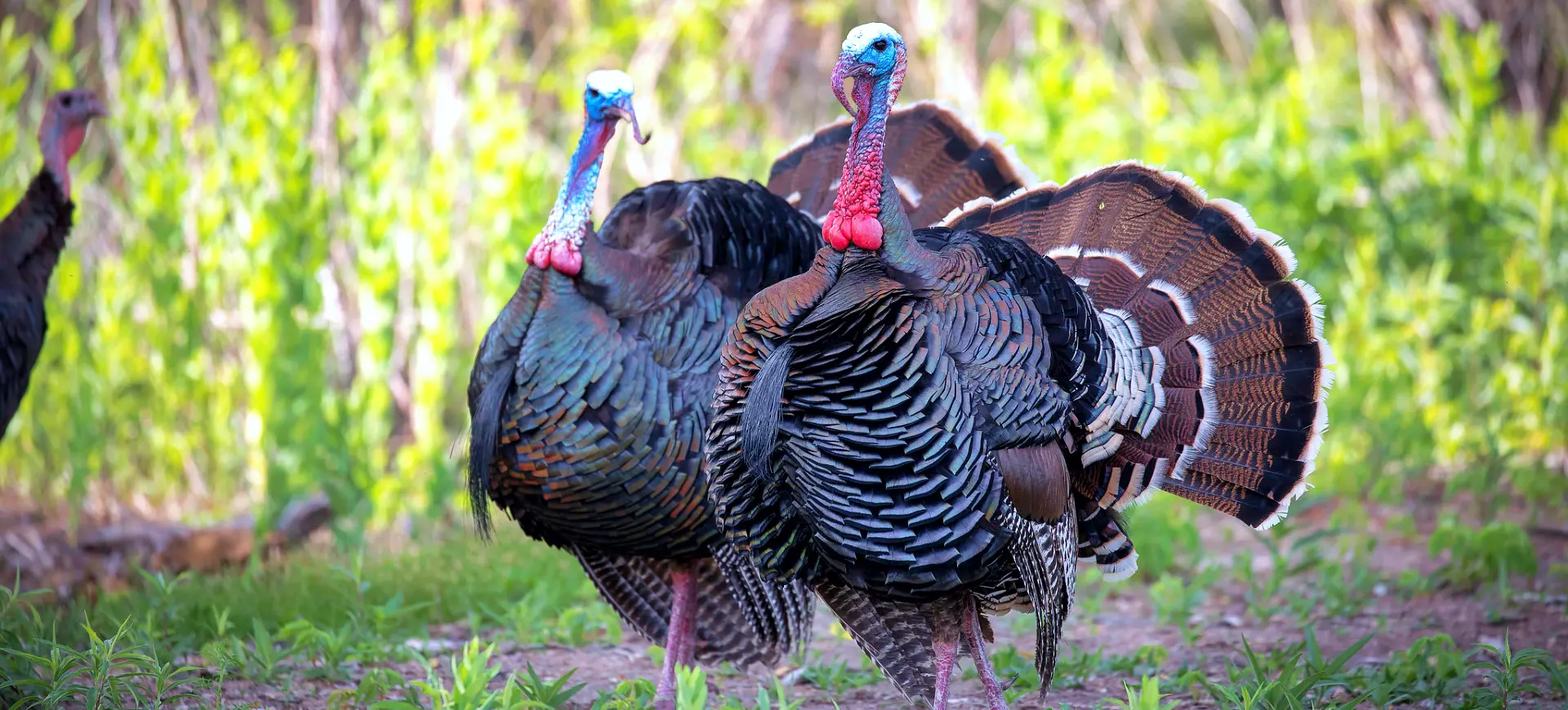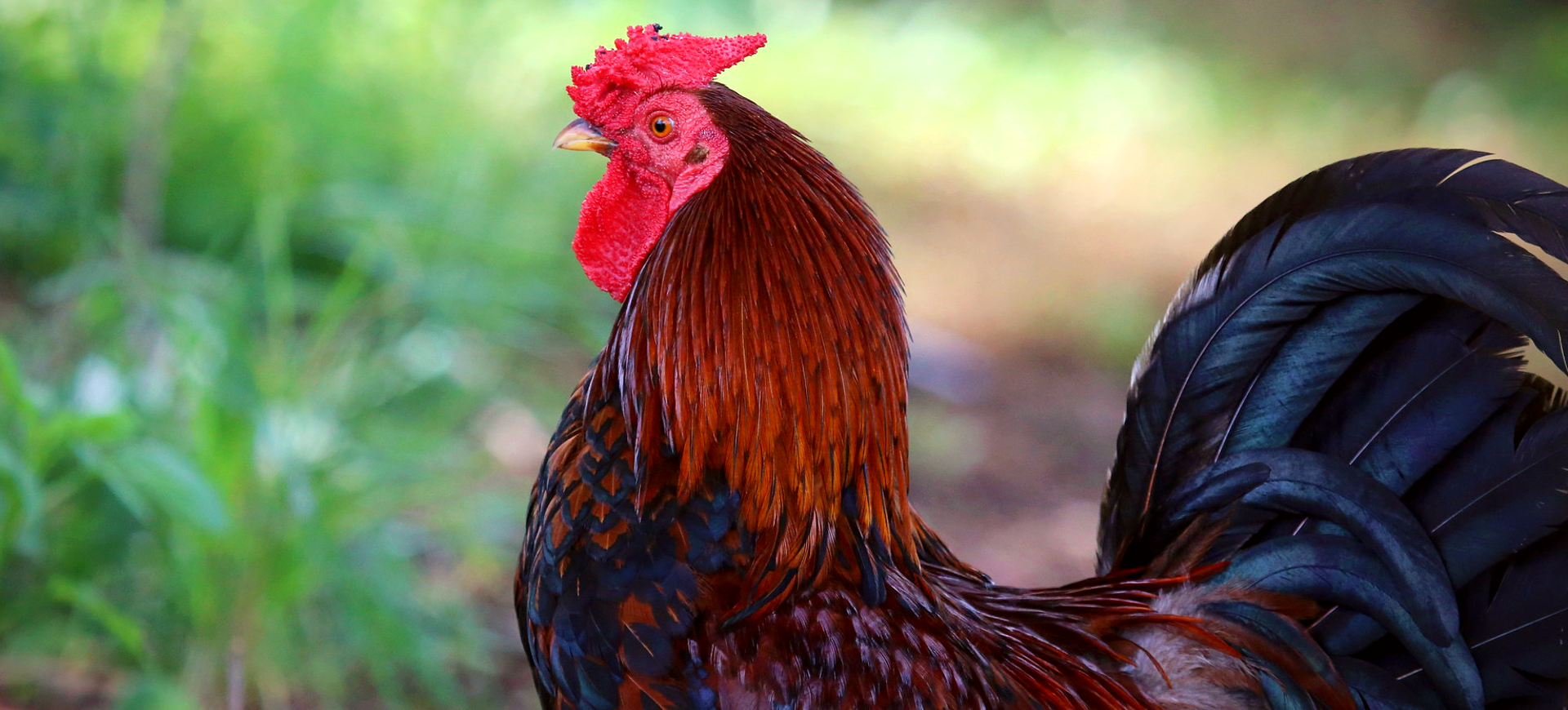Overview
The Ocellated Turkey, scientifically known as Meleagris ocellata, is a vibrant and distinctly colored bird native to the Yucatán Peninsula in Mexico, northern Belize, and northern Guatemala. Unlike its more familiar relative, the North American Wild Turkey, the Ocellated Turkey boasts an iridescent feathering of greens, blues, and gold, making it one of the most visually striking members of the turkey family. The bird gets its name from the eye-shaped, or ‘ocellated,’ spots on its tail feathers, reminiscent of a peacock’s feathers. Males are particularly colorful, with a blue head, bronze body, and bright red or blue spots on the skin.
The Ocellated Turkey is smaller and more slender than the North American Wild Turkey. Its unique vocalizations distinguish it further; males produce a distinct, high-pitched, sing-song gobbling sound, particularly during the breeding season. This species is predominantly ground-dwelling, although it roosts in trees at night to avoid predators. The Ocellated Turkey is also known for its elaborate courtship displays, where the male puffs up its feathers, fans its tail, and struts around to attract a mate.
Despite its striking appearance, the Ocellated Turkey is less well-known than its North American counterpart and faces various threats in the wild. Habitat loss due to agricultural expansion, hunting for food and sport, and collection of eggs and chicks are the primary concerns for its population. These pressures have led to a decline in numbers, making the conservation of this species and its habitat increasingly important.
Taxonomy
Kingdom
Phylum
Class
Order
Family
Genus
Species
Type
Physical Description:
The Ocellated Turkey is a medium-sized bird with a body length ranging from 28 to 48 inches and can weigh up to 12 pounds, with males being significantly larger than females. Its most notable feature is its striking, iridescent plumage, displaying a shimmering array of greens, blues, and bronzes. The tail feathers are especially eye-catching, featuring blue and bronze eye-shaped ocelli bordered in gold. The males also have a distinctive, fleshy blue crown and a red wattle, which becomes more pronounced and vivid during the breeding season.
Both sexes have strong, reddish-orange legs and a relatively short beak. The Ocellated Turkey’s wings are short and rounded, suited more for brief, powerful bursts of flight than long distances. Males also possess long spurs on their legs, used in defense and dominance displays. The bird’s overall build is robust and muscular, reflecting its ground-dwelling lifestyle and ability to run swiftly when necessary.

Lifespan: Wild: ~15 Years || Captivity: ~20 Years

Weight: Male: 11-12 lbs (5-5.5 kg) || Female: 6.6-7 lbs (3-3.2 kg)

Length: Male & Female: 28-48 inches (70-122 cm)

Height: Male & Female: 22-29 inches (57-76 cm)

Wingspan: Male & Female: 63-66 inches (160-170 cm)

Top Speed: 15 mph (24 km/h)
Characteristic:
Native Habitat:
The Ocellated Turkey is native to the Yucatán Peninsula of Mexico, northern Belize, and northern Guatemala. It inhabits a range of forest types, including tropical and subtropical lowland forests, and can also be found in agricultural areas where forests have been cleared. The bird prefers areas with a combination of open spaces for feeding and dense vegetation for cover and nesting.
The availability of roosting sites, such as tall trees, is crucial for Ocellated Turkey’s survival, providing safety from ground predators. Their habitat is characterized by a tropical climate with distinct wet and dry seasons, influencing the availability of food and impacting the bird’s behavior and movements.
Climate Zones:
WWF Biomes:
Biogeographical Realms:
Continents:
Diet:
Diet & Feeding Habits:
The Ocellated Turkey is an omnivore with a diet that varies depending on the availability of food sources. They primarily feed on the ground, consuming various items, including seeds, nuts, berries, fruits, and small invertebrates like insects and snails. During different seasons, their diet composition can change significantly; they may eat more animal matter when it’s abundant in the wet season and rely more on plant material during dryer periods.
In the wild, Ocellated Turkeys are foragers, spending a significant part of their day searching for food. They use their strong beaks to dig and peck at the ground, uncovering hidden food sources. This feeding behavior plays a crucial role in the ecosystem, as it helps in seed dispersal and pest control.
Mating Behavior:
Mating Description:
The Ocellated Turkey has a polygynous mating system, with dominant males mating with multiple females. During the breeding season, which typically occurs from March to April, males engage in elaborate displays to attract females. They puff up their feathers, fan out their stunning tails, and strut around with a characteristic, low-frequency drumming sound produced by a unique air sac in their neck.
Males also fight for dominance, using their sharp spurs as weapons. The victorious males secure territories and attract groups of females with whom they mate. After mating, the females lay a clutch of 8-15 eggs in a shallow nest on the ground and incubate them for about 28 days. The mother is solely responsible for raising the young, who are precocial and leave the nest shortly after hatching.
Reproduction Season:
Birth Type:
Pregnancy Duration:
Female Name:
Male Name:
Baby Name:
Social Structure Description:
The Ocellated Turkey is generally a solitary bird outside the breeding season, although it may form loose flocks, especially where food is abundant. During the breeding season, males become more territorial and social dynamics revolve around mating displays and mate competition. Females are more social, often forming groups with other hens and their young.
The complex social behavior during the breeding season, including the establishment of territories and dominance hierarchies, plays a crucial role in the reproductive success of individuals. Understanding these social structures is important for managing populations and ensuring effective conservation.
Groups:
Conservation Status:
Population Trend:
The Ocellated Turkey is currently classified as Near Threatened by the IUCN, with a decreasing population trend. The exact number of individuals in the wild is unknown, but the species is believed to be under pressure from habitat loss and hunting. The bird is still relatively common in some areas, but in others, it has become rare or locally extinct.
The fragmentation of their habitat due to deforestation and agricultural expansion is a significant concern, making isolated populations more vulnerable to extinction. Conservation efforts are needed to protect and reconnect these habitats, ensuring the species’ long-term survival.
Population Threats:
The primary threats to the Ocellated Turkey are habitat loss and hunting. Deforestation for agriculture and development leads to the loss of crucial feeding and roosting areas. Hunting for food and sport is also a significant concern, as it reduces population numbers and disrupts breeding activities.
Collecting eggs and chicks for food or as pets further impacts the species’ ability to maintain healthy population levels. Additionally, pesticides and herbicides in agricultural areas can poison the birds and reduce their food sources. Addressing these threats requires habitat protection, hunting regulation, and community engagement.
Conservation Efforts:
Conservation efforts for the Ocellated Turkey include habitat protection and restoration, particularly in and around protected areas. Establishing and maintaining corridors between fragmented habitats is crucial for allowing genetic exchange and movement between populations. Regulating hunting through enforcement of laws and community-based management is also essential to ensure sustainable populations.
Education and awareness campaigns can help local communities understand the importance of the species and the need for conservation. Ecotourism initiatives focused on Ocellated Turkey have been developed in some areas, providing economic incentives for local people to protect the species and its habitat. Continuous research and monitoring are necessary to understand the species’ needs and track the effectiveness of conservation strategies.
Additional Resources:
Fun Facts
- The Ocellated Turkey’s tail feathers have a unique, eye-like pattern, which gets its ‘ocellated’ name.
- Unlike the North American Wild Turkey, the Ocellated Turkey does not have a ‘beard’ – a cluster of modified feathers on the chest.
- Their distinct, sing-song gobble can be heard from over a mile away during the breeding season.
- Ocellated Turkeys are considered one of the most beautiful and vibrant turkey species due to their iridescent plumage.
- They have been part of Mayan culture and iconography for thousands of years.
- The spurs on a male’s legs grow longer each year and can be used to estimate age.
- Ocellated Turkeys are capable of short bursts of flight to escape predators or roost in trees.
- They play an essential role in their ecosystem as seed dispersers and consumers of insects.
- The species is considered a delicacy and sought after by hunters, contributing to its decline.
- Despite decreasing numbers, Ocellated Turkeys are less well-known or studied than their North American relatives.








